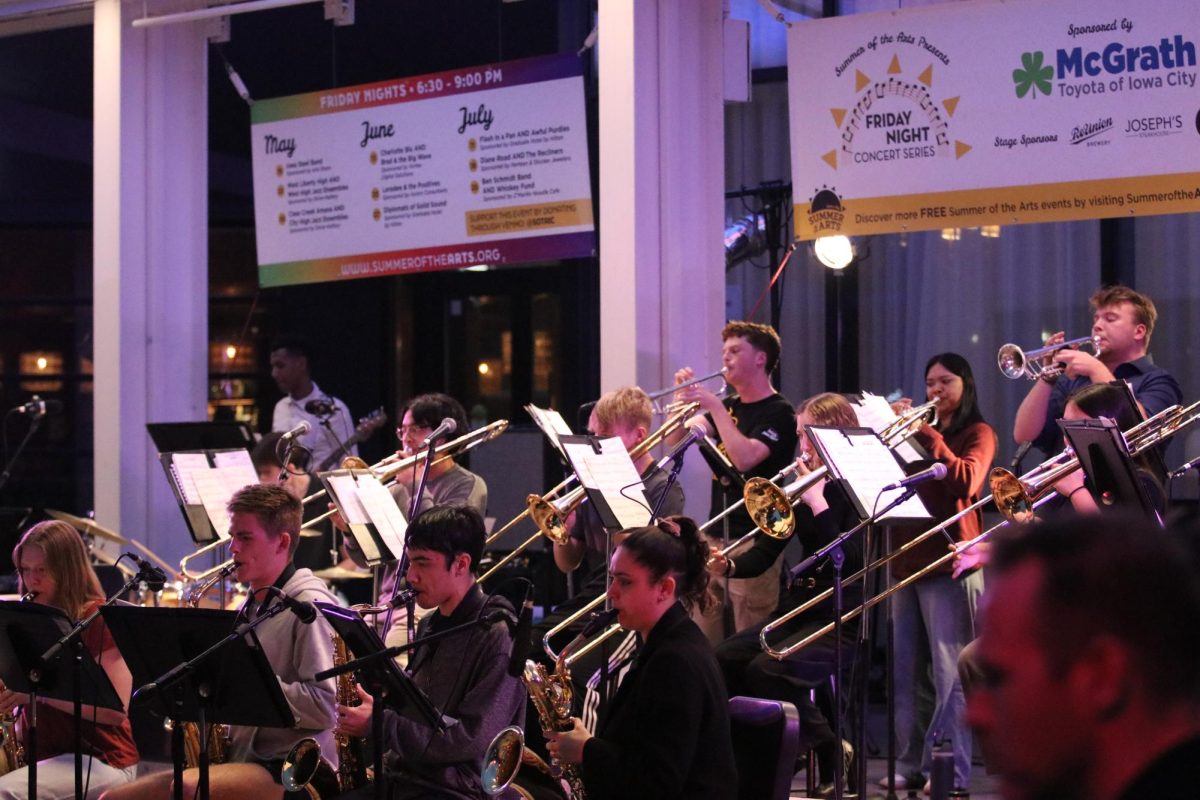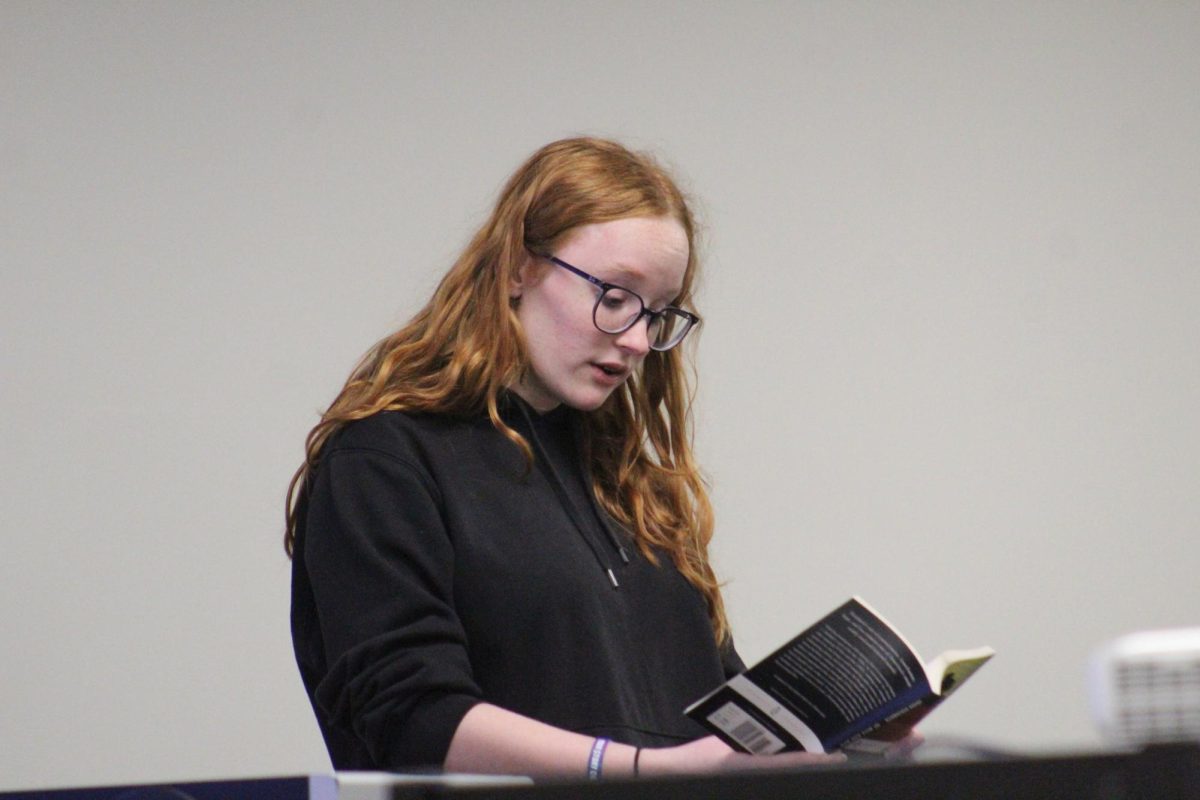
There was standing room only in City High’s Little Theater – every seat was filled all the way up to the balcony on March 7, as many parents and teachers gathered at a community forum from 7-8:30 p.m. to discuss the district leadership commitee’s first publicized draft of a redistricting plan for elementary schools on the east side of Iowa City – primarily affecting Wood, Twain, Longfellow, and Hills elementaries. This is one of two redistricting proposals that has been released by the district’s Leadership Committee, with the other moving students from Wickham Elementary from their current location at North Central Junior High to Northwest. The committee is not addressing redistricting on the high school level, although the school board called for a separate committee to explore a high-school-level plan at its meeting March 6. All changes proposed by the Leadership Committee are slated for implementation in the 2013-14 school year.
Ann Feldmann, an ICCSD assistant superintedent, explained that the main purpose of the plan is to relieve overcrowding at Wood Elementary, accomplished by using available space at Twain and Hills. The second primary goal is to bring the percentage of students at each school on free and reduced lunch closer to the district average of 33.4% (Longfellow currently has 12.1% compared to 71.1% at Twain, according to the district’s data presented at the forum). For more on the plan, see here.
Moving students from Wood, a neighborhood school within walking distance – to Longfellow, which requires an additional $40,000 each for two buses, was among the most controversial aspects of the plan.
Feldmann admitted that the calculations were based on rough estimates, and the vagueness and potential inaccuracy of the numbers – from enrollment to free and reduced lunch to school capacity – were questioned repeatedly by community members at the forum.
Overcrowding is mentioned ad naseum on the West side, but Feldmann added, “We do have capacity issues on the east side. … And it’s currently growing.” She went on to explain that the distribution of the district’s growth have made the redistricting process particularly difficult. “We grew 440 students this year, and we’re one of the few districts in Iowa that grew. That 440 students could be a new elementary school, but we didn’t grow that way. … People are moving in all over the board. [Redistricting and making projections is] a bit like looking into a crtsyal ball,” she said, adding that the committee’s mission had been hampered by uncertainty in federal and state level educational policy.
Several members asked about the possibility of a new elementary school in the east side – with several contributors expressing frustration that the west side had received more funding for new buildings, including the recent construction of Borlaug Elementary, over the past several years. Feldmann said that the board has not reccommended the construction of any new east side elementary schools. The money for a third comprehensive high school and for a new elementary school would come from the same stream of tax dollars – and the funds are currently allocated for a third high school, according to Superintendent Steve Murley.
A chorus of concerned attendees also spoke out against the current transfer policy, which they believe effectively allows students to enroll in whichever elementary school their families deem the best. One parent of Twain students said “It is painful to parents like me when people send kids to other schools because they think Twain is a bad school.”
Feldmann agreed that No Child Left Behind policies often “give good schools a bad reputation that they don’t deserve based on one test score.”
In fact, the talks come amid larger national discussion about making major changes to federal No Child Left Behind legislation. If federal funding were cut for SINA (Schools In Need of Assistance) transfers, which pays for programs like busing to create a more equitable distribution of free and reduced lunch participants. Without federal funding, the district could have to pick up the tab on $2-300,000 in busing costs, Murley said at the meeting.
The forum was the first in a series, with the next being held on March 21 at 7 p.m. in the Northwest Junior High Little Theater.












